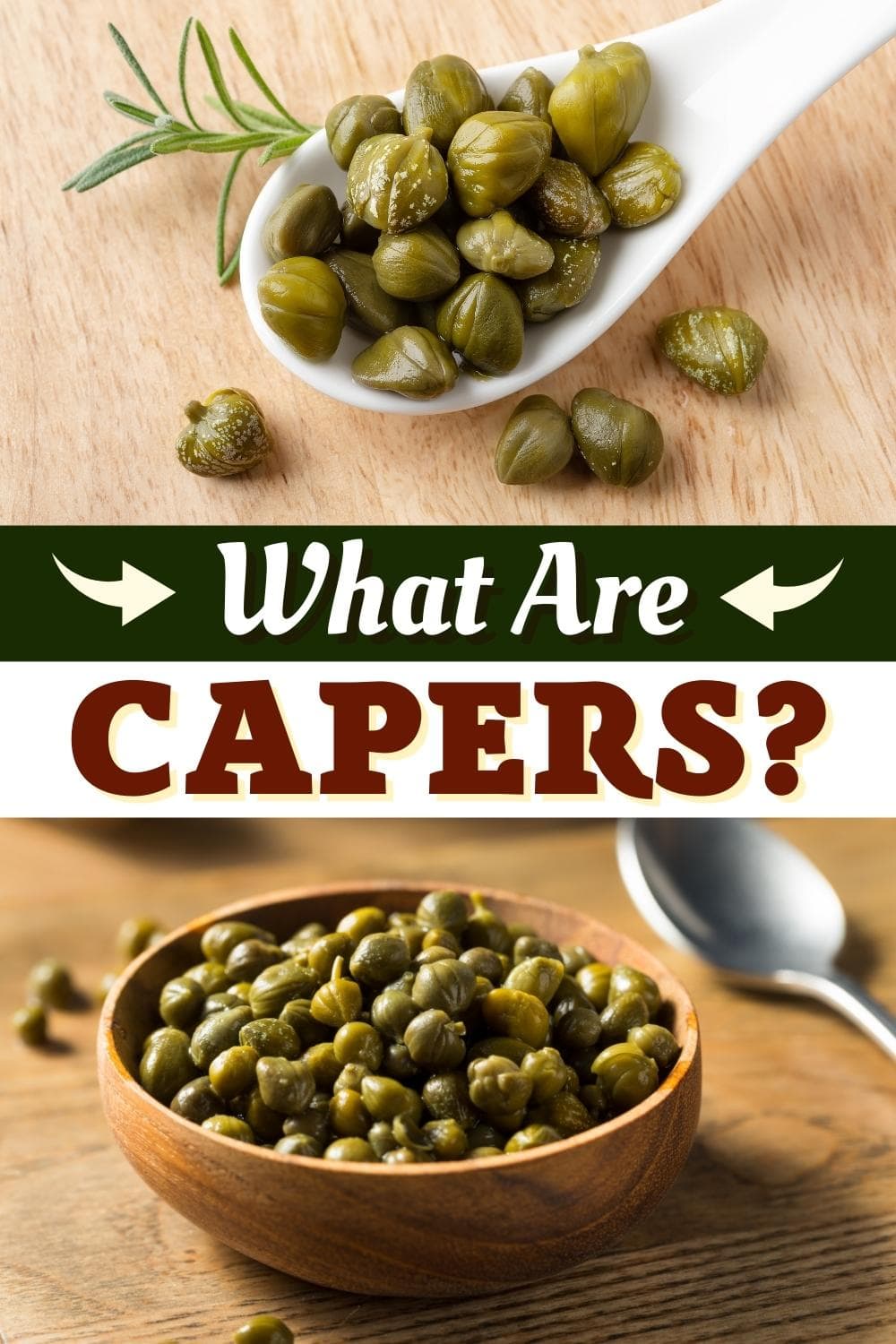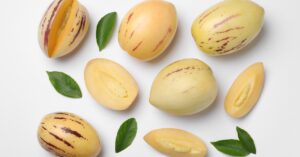Capers are a mysterious little ingredient that has tons of flavor. But what are capers?
You may have seen them on your favorite Italian dishes. They taste great, add so much flavor to recipes, and they look just like peas.
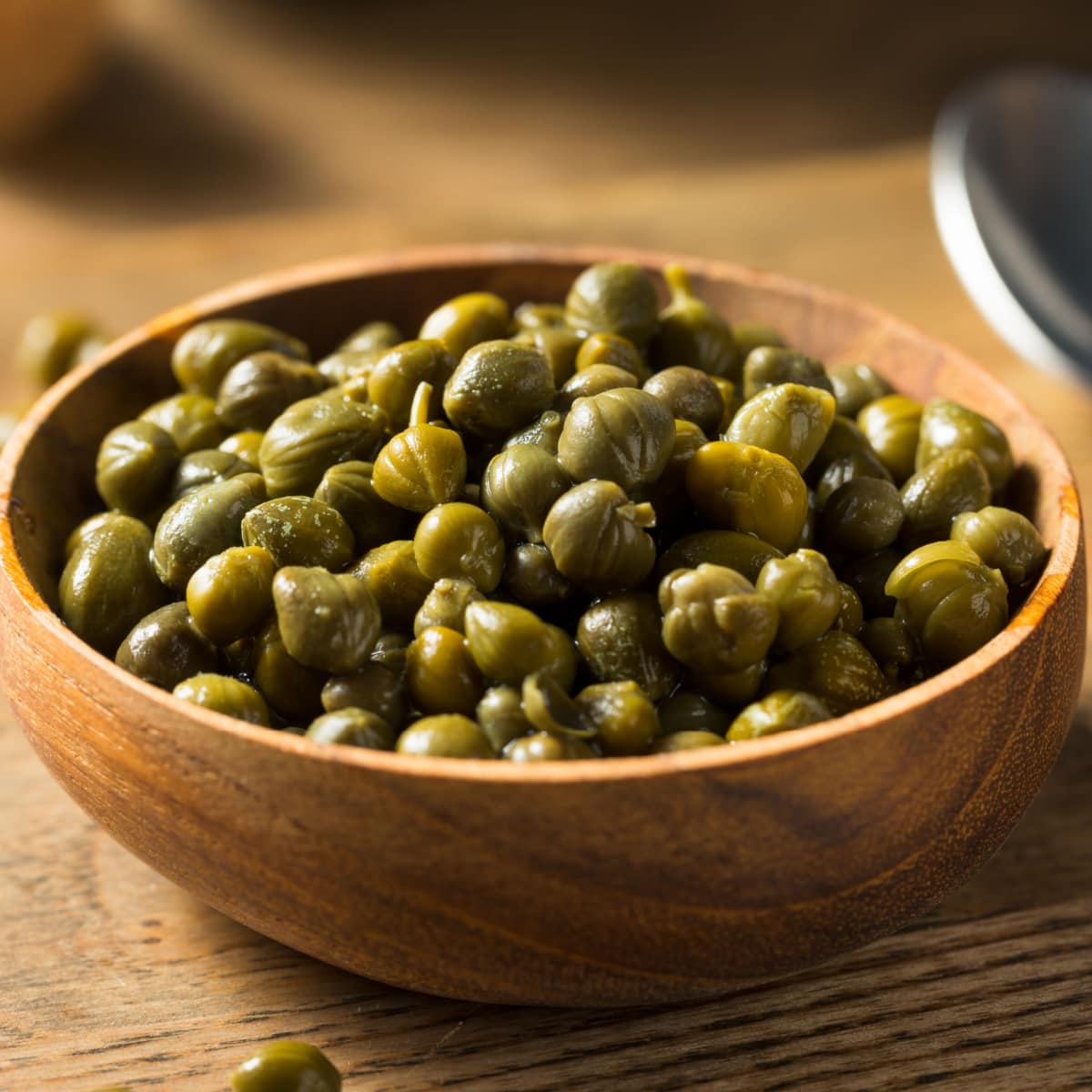
However, capers are far different from any kind of pea. In fact, they’re actually flower buds!
By the time you’re through with this article, you’ll be a caper expert!
You’ll know exactly what a caper is and how to cook with them.
Soon you’ll have capers stocked up at all times and you’ll never have to wonder what they are.
What Are Capers?
Capers come from the Mediterranean and some Asian regions. They grow on a bush called the caper bush or capparis spinosa.
They’re tiny green pods that somewhat resemble green peas.
Capers that we see in grocery stores are the unripened buds of the capparis spinosa flower.
Once capers are harvested, they’re dried in the sun.
Then they’re preserved and prepared for consumption and distribution.
The preservation process is usually done by either curing them in salt or pickling them.
These little salt bombs are associated with Mediterranean foods, but they’re used in many cuisines.
They’re used to add a tangy, briny flavor to many different recipes. They’re most famously used in chicken piccata.
What Do Capers Taste Like?
Since capers are either salt-cured or pickled, you can probably guess they’re pretty salty.
The flavor of capers is hard to describe. However, they’re often compared to olives or described as lemony and salty.
They’re also pungent and a little bit earthy.
Capers are preserved because when they’re fresh, they tend to be unappetizing. They are floral and bitter.
Curing or pickling them reduces the bitterness and transforms the taste into a more pleasant flavor.
I like to think of capers as a seasoning, like salt or garlic, rather than a veggie.
They’re used in recipes to add tons of bright tartness.
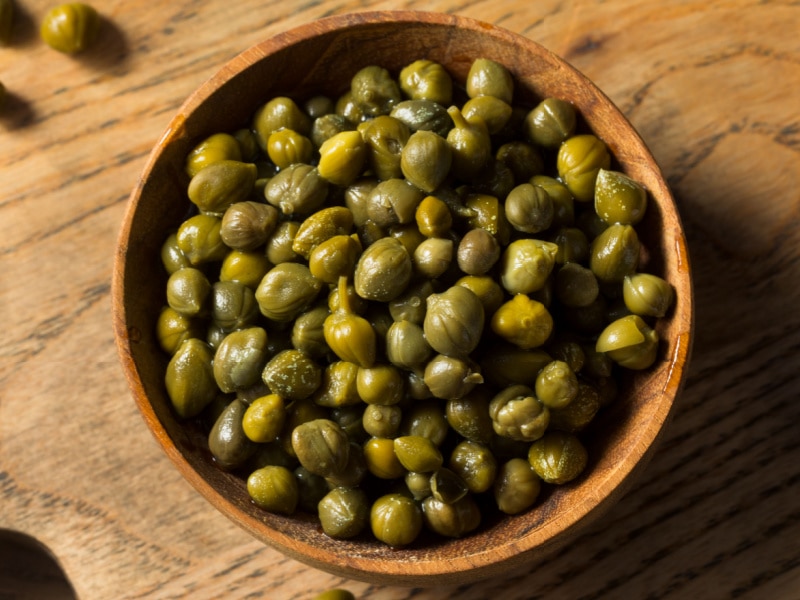
Different Types of Capers
You might be surprised to learn that there are many different types of capers.
They’re all similar: small, round, and green, and they usually come in a jar. The main difference is really their size.
Their size is determined by their stage of development.
- Nonpareilles: These are the smallest of all capers. They’re about seven millimeters or one-quarter inch in diameter.
- Surfines: They’re about seven to eight millimeters in diameter.
- Capucines: These are about eight to nine millimeters.
- Capotes: They’re about 11 millimeters in diameter.
- A fine: They range from 11 to 13 millimeters.
- Gruesas: Any capers that are larger than 13 millimeters.
As the capers mature and grow, the texture becomes tougher and the flavor is more bitter.
Capers vs. Caperberries (What’s the Difference?)
You may have seen both capers and caperberries at your grocery store.
Although they have similar names and grow on the same plant, they’re very different.
Caperberries are the fruit of the caper plant. When capers aren’t harvested, the flowers bloom and the caperberry is the result.
The caper bush produces beautiful pink and white flowers. Once the petals fall off, the caperberry is left behind.
It’s easy to tell the difference once you understand what each one is. Caperberries are much larger in size.
They’re closer to the size of an olive. They usually have to be chopped before they’re used in recipes.
Much like capers, caperberries are usually pickled before they’re sold in stores. They make a fantastic cocktail garnish!
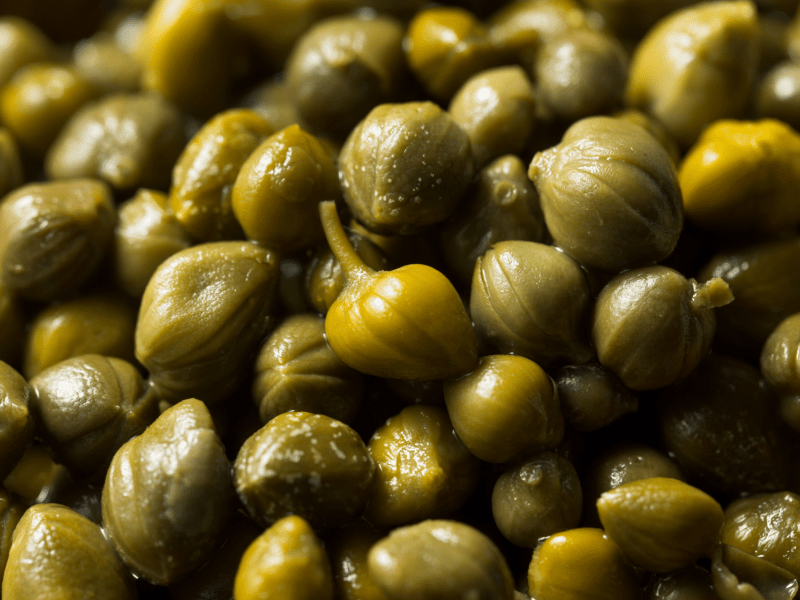
How to Cook With Capers
Okay, we know what they are, but how can we cook with them?
Capers do have a pungent flavor so you’ll want to use them with care.
The larger the capers, the stronger and more obvious the flavor will be.
Cooking with capers requires a little bit of finesse.
Just like with salt, you want to add enough to taste it and enhance other flavors. But you don’t want it to overwhelm the dish.
Some recipes may call for rinsing the capers before adding them to the recipe.
This just mellows the flavor and gets rid of extra brine or salt. Be sure to pat them dry afterward.
Capers are also fine to use straight out of the jar. Some of the larger ones can be chopped up into different dishes.
Try using capers in sauces, soups, and dips.
You can even puree them. However, most of the time you see capers on a recipe list, they’ll stay whole.
Caper Substitutes
Sometimes it’s difficult to find capers, or maybe you just don’t have them on hand.
You might also have people in your household that don’t like them.
If that’s the case, you can easily make a swap without sacrificing flavor.
- Chopped green olives – Since capers are often compared to green olives, this is a near-perfect substitution option. You still get the salty, briny flavor, and they’re easy to find at the store!
- Pickled artichoke hearts – Artichoke hearts are another great substitute for capers. They have a light, briny flavor, and when chopped, the texture is similar to capers.
- Thyme – This fresh or dried herb has a very similar flavor to capers. It’s slightly lemony with bright earthy notes.
- Pickled gherkin – Gherkins are briny and salty like a pickle, so they’re a good substitute for capers. This is another substitute that will need to be chopped into small pieces.
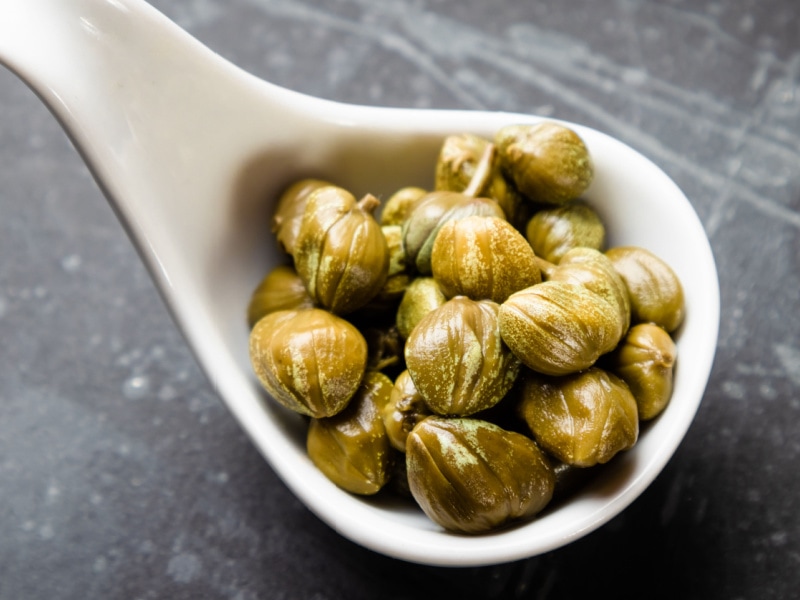
Where to Buy Capers
If you’re not used to buying capers, you may wonder where to find them.
So where can you find capers? You may have guessed that they’re in the pickle aisle of your local grocer!
Right by the olives and pickles, you’ll find jars of capers.
Some stores may only carry one kind so you’ll have to look carefully.
You may be able to find a variety of capers depending on the store or region.
You’ll find generic brand capers as well as name-brand at grocery stores.
You can also look at specialty stores or online.
It’s also worth noting that smaller nonpareil capers are more expensive than larger ones.
How to Store Capers
Since capers are used in such small quantities, one jar will last a long time.
Based on how your capers are packaged, there are a couple of different ways to store them.
Both kinds of capers can be stored unopened in the pantry or countertop.
No matter what, you’ll need to store them in an airtight container.
You want to minimize any outside bacteria getting into their environment.
If you have capers that are made and packed with brine, be sure that they’re fully submerged.
If so, they’ll last for about 9 months, sometimes longer, in the refrigerator.
Capers packed in salt can be stored in the pantry at room temperature for about 6 months.
If you notice any foul odors or odd colors, you know the capers are no longer good to eat.
